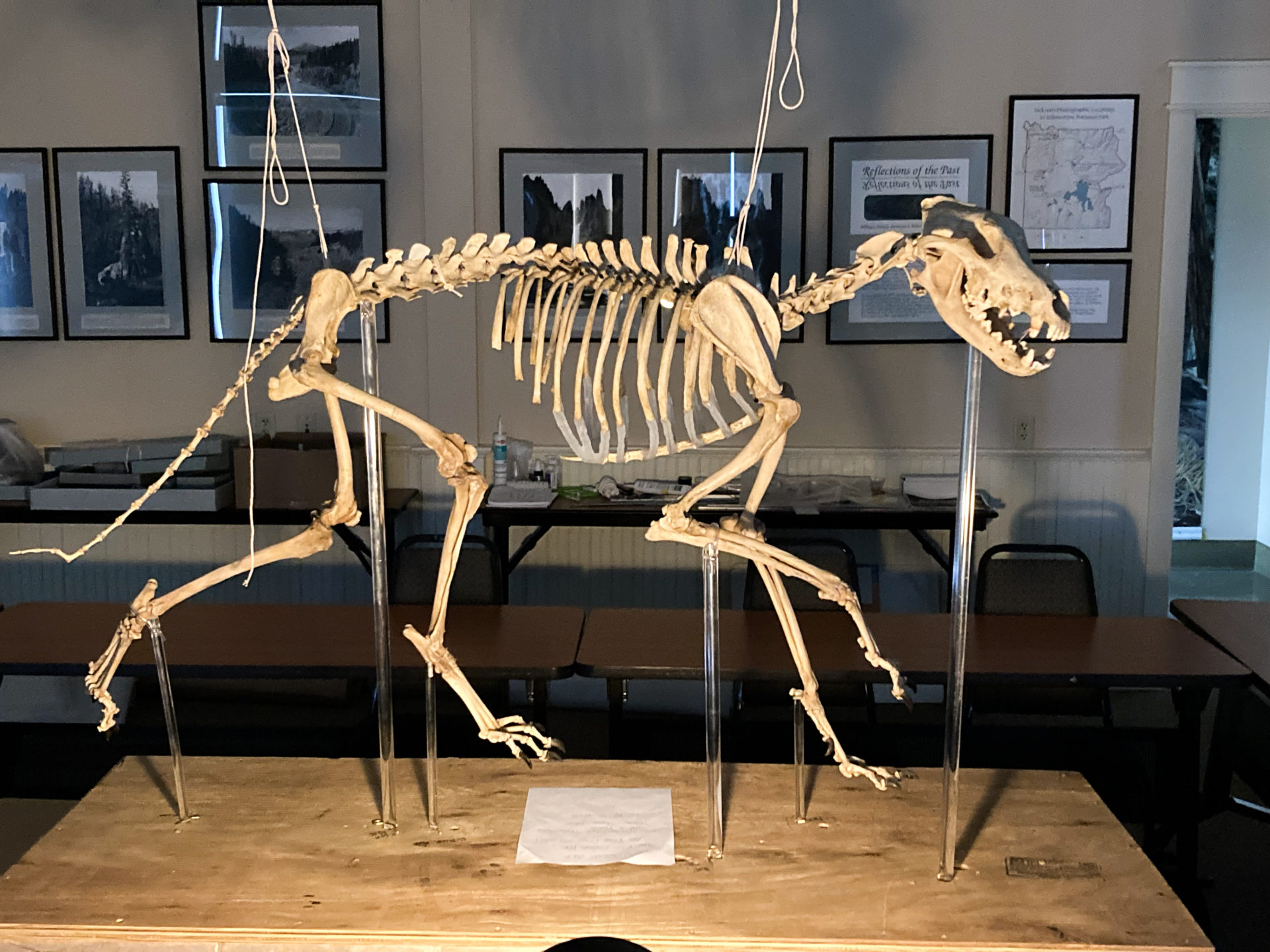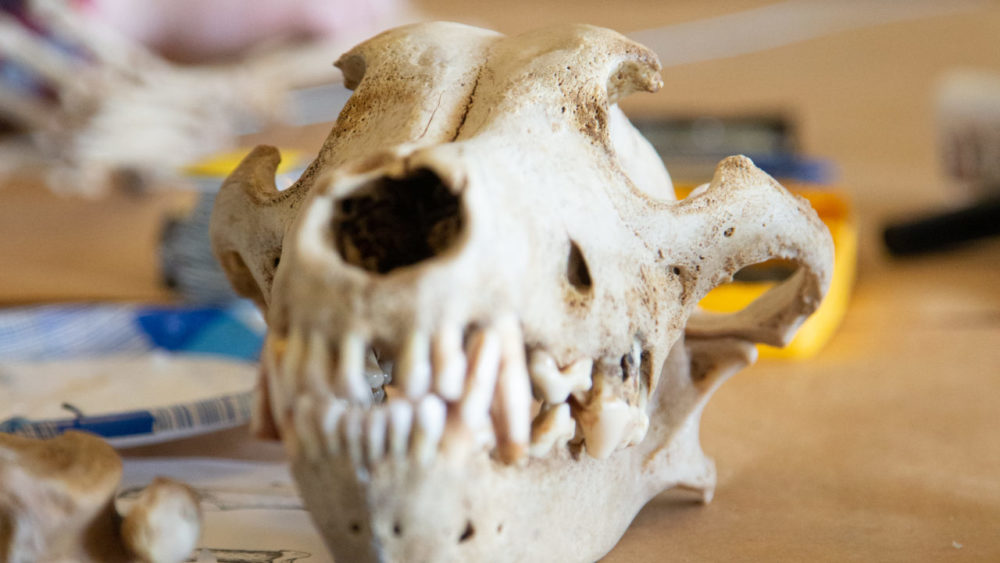In mid-February, Yellowstone Forever members funded the articulation of Wolf 302M. Expert articulator Lee Post flew in from Alaska to spend a week in Gardiner leading the project. Skeleton articulation, or “bone building” as Lee calls it, is the process of converting a dead animal into a completely cleaned and articulated skeleton (like the skeletons you see in museums).
Lee’s work on the bones of Wolf 302M is especially meaningful since the animal’s lineage is likely traceable to wolves reintroduced in Yellowstone through the Yellowstone Wolf Project. Born in 2000, Wolf 302 spent many years in the northern range of Yellowstone, mating, defending, and providing food for his pack. He was often referred to as “Casanova” because he mated with many females whereas most wolves are monogamous. He also spent a lot of time near roads making him more visible to park visitors.
When he reached the age of eight and a half, he finally became Alpha of a pack and was beloved by park visitors until his death in 2009. The articulation team’s first few days of work included sorting the skeletal remains of Wolf 302M and identifying what bones go where—a task made a bit easier thanks to meticulous drawings from Lee.
Every day, from sunup to sundown (and often after hours), Lee and the team came into our building just north of Yellowstone to work on preparing this important skeleton.
They connected the bones using a host of materials including epoxy, glue, pins, and wires. Lee explained that skeleton articulation traditionally involves mostly “seen” wires, but his goal is to have most everything unseen to ensure you can really get a feel for the skeleton as it was. The team also discovered plenty of interesting facts about 302M along the way, including many injuries from twisted ribs and broken vertebrae—evidence of epic battles likely fought for food or survival.
The skeleton will eventually head to the Heritage and Research Center as the team works on finding a home for it to live as an educational tool.
With the assistance from members of the Yellowstone Wolf Project and staff from the Heritage and Research Center, Lee was able to bring us insights into the life and journey of Wolf 302M—important information to help educate future generations and improve future conservation efforts.
 Wolf 302 articulated be Lee Post and members of the Yellowstone Wolf Project and staff from the Heritage and Research Center.
Wolf 302 articulated be Lee Post and members of the Yellowstone Wolf Project and staff from the Heritage and Research Center.
Comments are closed.